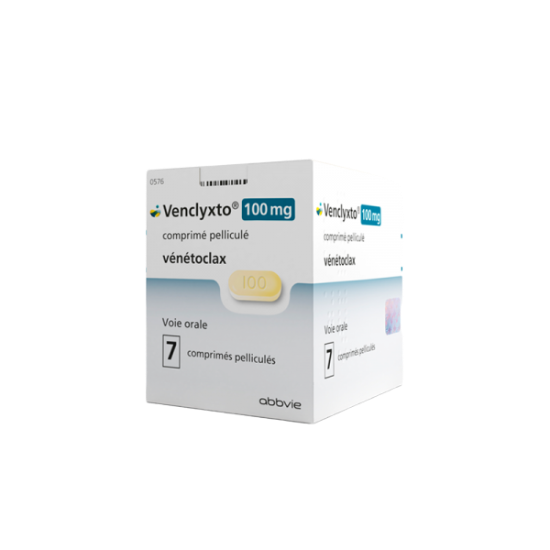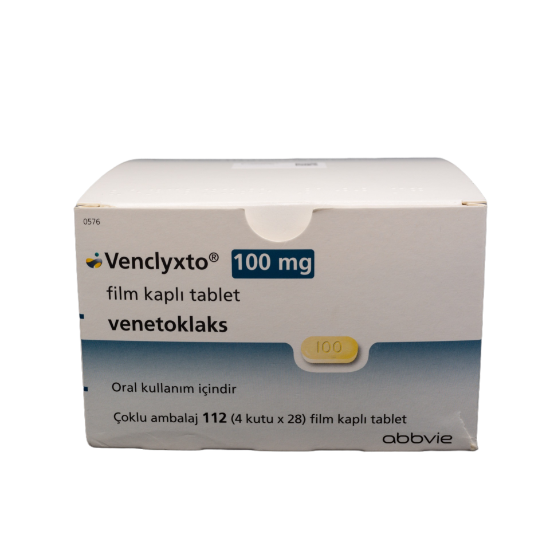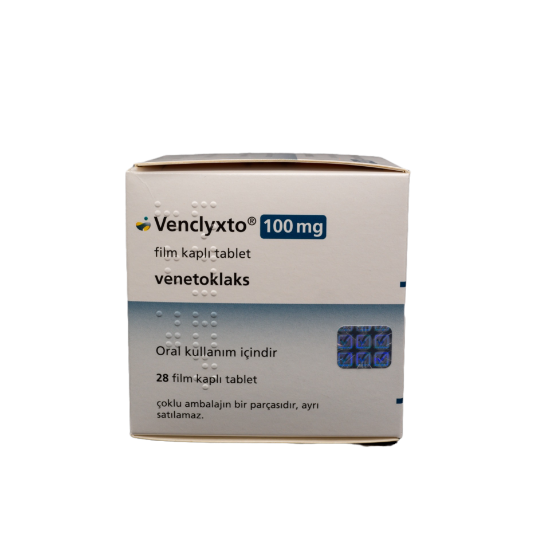 Introduction
IntroductionINDICATION:?In combination with obinutuzumab?for the treatment of adult patients with previously untreated chronic lymphocytic leukaemia (CLL).?In combination with rituximab?for the treatment of adult patients with CLL who have received at least one prior therapy.?As monotherapy, for the treatment of CLL in the presence of 17p deletion or TP53 mutation in adult patients who either are unsuitable for or have failed a B-cell receptor pathway inhibitor.?Also as monotherapy, for the treatment of CLL in the absence of 17p deletion or TP53 mutation in adult patients who have failed both chemoimmunotherapy and a B-cell receptor pathway inhibitor.
 Warning & Precautions
Warning & PrecautionsTLS, including fatal events and renal failure requiring dialysis, has occurred in patients treated with venetoclax. The risk of TLS is a continuum based on multiple factors, including comorbidities (particularly reduced renal function), tumour burden, and splenomegaly in CLL. All patients should be assessed for risk and should receive appropriate prophylaxis for TLS, including hydration and anti-hyperuricaemics. Blood chemistries should be monitored and abnormalities managed promptly. More intensive measures should be employed as overall risk increases. Dosing should be interrupted if needed; when restarting venetoclax, dose modification guidance should be followed, see SmPC for full details. Concomitant use of this medicinal product with strong or moderate CYP3A inhibitors increases venetoclax exposure and may increase the risk for TLS at initiation and during the dose-titration phase.?Neutropenia and infections: In patients with CLL, Grade 3 or 4 neutropenia has been reported. Complete blood counts should be monitored throughout the treatment period. Dose interruptions or reductions are recommended for patients with severe neutropenia. Refer to the SmPC for recommended dose modifications based on cytopaenias. Serious infections including events of sepsis with fatal outcome have been reported. Monitoring of signs and symptoms of infection is required. Suspected infections require prompt treatment, including antimicrobials and dose interruption or reduction as appropriate.?Immunisation: Live vaccines should not be administered during treatment and thereafter until B-cell recovery as the safety and efficacy has not yet been established.?CYP3A inducers: Co-administration of CYP3A4 inducers may lead to decreased venetoclax exposure and consequently a risk for lack of efficacy. Concomitant use of venetoclax with strong or moderate CYP3A4 inducers should be avoided.?Women of childbearing potential: Women of childbearing potential must use a highly effective method of contraception while taking venetoclax.
FERTILITY PREGNANCY AND LACTATION:?Women of childbearing potential/Contraception in females: Women should avoid becoming pregnant while taking venetoclax and for at least 30 days after ending treatment.?Pregnancy: Venetoclax is not recommended during pregnancy and in women of childbearing potential not using highly effective contraception.?Breast-feeding: Breast-feeding should be discontinued during treatment with venetoclax.?Fertility: Before starting treatment, counselling on sperm storage may be considered in some male patients.
 Interactions
InteractionsSee SmPC for full details. Venetoclax is predominantly metabolised by CYP3A.?CYP3A inhibitors: In patients with CLL, concomitant use of venetoclax with strong CYP3A inhibitors at initiation and during the dose titration phase is contraindicated due to increased risk for TLS. At initiation and during the dose-titration phase, concomitant use with moderate CYP3A inhibitors should be avoided. Alternative treatments should be considered. If a moderate CYP3A inhibitor must be used, the doses should be reduced by at least 50% and patients should be monitored more closely. See SmPC for full details of recommended dose modifications with CYP3A inhibitors. Grapefruit, Seville oranges and starfruit should be avoided during treatment.?P-gp and BCRP inhibitors: Concomitant use of venetoclax with P-gp and BCRP inhibitors at initiation and during the dose titration phase should be avoided; if a P-gp and BCRP inhibitor must be used, patients should be monitored closely for signs of toxicities.?CYP3A inducers: Concomitant use of venetoclax with strong or moderate CYP3A inducers should be avoided. Alternative treatments with less CYP3A induction should be considered. Preparations containing St. John"s wort are contraindicated during treatment with venetoclax.?Bile acid sequestrants: Co-administration of bile acid sequestrants with venetoclax is not recommended as this may reduce the absorption of venetoclax. If a bile acid sequestrant is to be co-administered with venetoclax, the SmPC for the bile acid sequestrant should be followed to reduce the risk for an interaction, and venetoclax should be administered at least 4-6 hours after the sequestrant.?Warfarin: It is recommended that the international normalized ratio be monitored closely in patients receiving warfarin.?Substrates of P-gp, BCRP, and OATP1B1; Co-administration of narrow therapeutic index P-gp, or BCRP substrates with venetoclax should be avoided. If a narrow therapeutic index P-gp or BCRP substrate must be used, it should be used with caution. For an orally administered P-gp or BCRP substrate sensitive to inhibition in the gastrointestinal tract its administration should be separated from venetoclax administration as much as possible to minimise a potential interaction. If a statin is used concomitantly with venetoclax, close monitoring of statin related toxicity is recommended.
 Side Effects
Side EffectsLike all medicines, this medicine can cause side effects, although not everybody gets them
Serious
The most frequently reported serious adverse reactions (≥2%) in patients receiving venetoclax monotherapy were pneumonia and febrile neutropenia. In combination with obinutuzumab or rituximab, the most frequently reported serious adverse reactions (≥2%) were pneumonia, sepsis, febrile neutropenia, and TLS.
Common
(≥1/100 to <1/10): Sepsis, urinary tract infection, febrile neutropenia, TLS, hyperuricaemia and blood creatinine increased. Note that some of these effects were also observed at grade ≥3.
Very common
(≥1/10): Pneumonia, upper respiratory tract infection, neutropenia, anaemia, lymphopenia, hyperkalaemia, hyperphosphataemia, hypocalcaemia, diarrhoea, vomiting, nausea, constipation and fatigue.
 Disclaimer:
Disclaimer:The contents of this website are for informational purposes only and not intended to be a substitute for professional medical advice, diagnosis, or treatment. Please seek the advice of a physician or other qualified health provider with any questions you may have regarding a medical condition. Do not disregard professional medical advice or delay in seeking it because of something you have read on this website.
PRODUCT DETAILS
ALTERNATE BRANDS View All
The contents of this website are for informational purposes only and not intended to be a substitute for professional medical advice, diagnosis, or treatment. Please seek the advice of a physician or other qualified health provider with any questions you may have regarding a medical condition. Do not disregard professional medical advice or delay in seeking it because of something you have read on this website.










